Projects
Focus Areas & Projects
Focus Areas
Our research program is organized in five synergistic focus areas:
Molecular Building Blocks
Functional Templates
Surfaces & Interfaces
Transport & Function
Theory & Modeling
- A – Molecular Building Blocks addresses the synthesis of pi-conjugated MBB with varying templating capabilities
- B – Functional Templates comprises the on-surface and solution synthesis of templates
- C – Surfaces & Interfaces deals with investigations of molecular thin films on templating surfaces
- D – Transport & Function investigates charge and exciton transport in functional (pre-) devices
- E – Theory & Modeling addresses method development and its application to templating
Focus Area A – Molecular Building Blocks
In TIDE, the rationale for the selection of the pi-conjugated materials used for templating is guided by the necessity to use (semi-) rigid, anisotropic MBBs to reduce their degrees of freedom in conformation, having in mind the naïve concept of building a brick wall. At the same time, the molecules should provide the desired optoelectronic functionalities, e.g. absorption and/or emission in the solid state (thin film).
Principle Investigator: Prof. Arne Lützen
Squaraines are small molecular quadrupolar D−A−D chromophores which makes them suitable candidates for our templating approach. We will decorate those with different chiral endgroups and use them as absorber materials for polarization-sensitive OSCs. In addition to the anilino-squaraines, indolenine-squaraines present a second group of very promising candidates as these are known to possess aggregation induced (enhanced) emission activity. Thus, stereochemically defined supramolecular aggregates of enantiomerically pure compounds could not only enhance or induce circular dichroism, but might also lead to circularly polarized luminescence (CPL). Both properties can be used as a very sensitive probe to determine the degree of order in templated thin films grown on graphene or GNR. This is especially true for the growth on chiral graphene nanoribbons, which will be prepared in project B1.
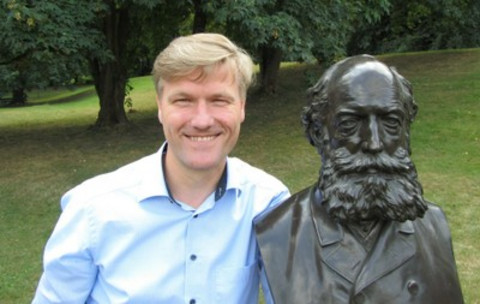
References
[1] J. Zablocki, D. Hertel, O. Arteaga, J. Anhäuser, R. Puttreddy, J. J. Holstein, G. H. Clever, K. Rissanen, K. Meerholz, A. Lützen, M. Schiek, Chirality 32, 619 (2020).
[2] O. S. Abdullaeva, F. Balzer, M. Schulz, J. Parisi, A. Lützen, K. Dedek, M. Schiek, Adv. Funct. Mater. 29, 1805177 (2019).
[3] M. Schulz, F. Balzer, D. Scheunemann, O. Arteaga, A. Lützen, S. C. J. Meskers, M. Schiek, Adv. Funct. Mater. 29, 1900684 (2019).
[4] M. Schulz, J. Zablocki, O. S. Abdullaeva, F. Balzer, A. Lützen, O. Arteaga, M. Schiek, Nat. Commun. 9, 2413 (2018).
[5] F. Balzer, H. Kollmann, M. Schulz, M. Schmidtmann, G. Schnakenburg, A. Lützen, C. Lienau, M. Silies, M. Schiek, Cryst. Growth Des. 17, 6455 (2017).
Contact Information
Group of Prof. Arne Lützen
University Bonn
Kekulé Institute of Organic Chemistry and Biochemistry
Arne.luetzen@uni-bonn.de
A2 – Controlled formation of molecular stacks
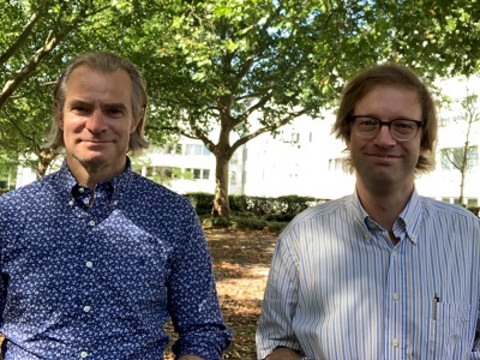
Principle Investigator: Prof. Sigurd Höger
This project will investigate the process of polycyclic/heterocyclic aromatic hydrocarbon (PAHs) aggregation. Our approach relies on the synthesis of PAH-substituted polygonal arylene-alkynylene macrocycles that self-assemble into periodic patterns at the solid/liquid interface on primary templates like HOPG or graphene/Cu(111) in a predictable manner. This will enable us to study the impact of disorder as a function of the stack thickness, since a single defect (e.g. misplaced molecules within a molecular stack), leads to a charge carrier scattering site. STM/STS/cAFM measurements will give insights into how these systems form, how defects on the substrate influence nucleation and growth, and how defects in the organic layer can be addressed.
This will be a combined synthetic (organic synthesis, Sigurd Höger) and analytic (STM, Stefan-S. Jester) project.
Contact Information
Group of Prof. Sigurd Höger
Group of Dr. Stefan-S. Jester
University Bon
Kekulé Institute of Organic Chemistry and Biochemistry
Hoeger@uni-bonn.de
References
[1] T. J. Keller, J. Bahr, K. Gratzfeld, N. Schönfelder, M. A. Majewski, M. Stępień, S. Höger, S.-S. Jester, Beilstein J. Org. Chem. 15, 1848 (2019).
[2] M. Hündgen, K. A. Weis, S. Höger, S.-S. Jester, Chem. Commun. 54, 10558 (2018).
[3] P. Wilhelm, J. Vogelsang, G. Poluektov, N. Schönfelder, T. J. Keller, S.-S. Jester, S. Höger, J. M. Lupton, Angew. Chem. Int. Ed. 56, 1234 (2017).
[4] R. May, S.-S. Jester, S. Höger, J. Am. Chem. Soc. 136, 16732 (2014).
Focus Area B – Functional Templates
TIDE proposes to use graphene, blue phosphorus (blueP), and hBN as templating substrates. These 2DM share a three-fold rotational symmetry, but vary in conductivity and optical bandgap, synonymous for the strength of electronic interaction with the Molecular Building Blocks from Focus Area A, which can be varied this way. Due to their ultrathin nature, transport or tunneling of charge carriers across the templates is possible, making them ideal candidates for our purpose of investigating molecular templating in OE devices.
B1 – Graphene nanoribbons and nanographenes as groundfloor for templated growth of molecular building blocks
Principle Investigator: Prof. Klaus Meerholz
We will synthetically target novel Graphene Nanoribbons (GNRs) as well as large Nanographenes (NGs) with designed templating capability for Molecular Building Blocks on the one hand and interesting semiconcting properties (such as Near-Infrared absorption, stimulated emission) on the other. Throughout the project, we envision novel GNRs and NGs that can be processes by vacuum deposition as well as solution deposition, which ultimately allows for direct comparison (order parameter in the template).
The project will be a joint collaboration with Prof. Klaus Müllen (University of Cologne & Max-Planck-Institute for Polymer Research in Mainz).
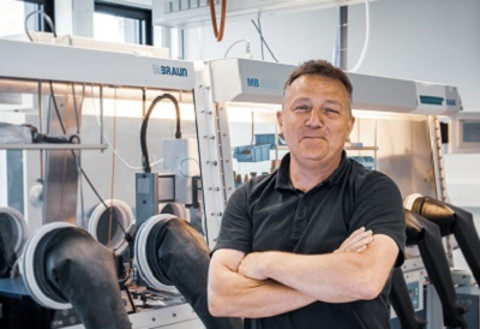
References
[1] M. Pfeiffer, B.V. Senkovskiy, D. Haberer, F.R. Fischer, F. Yang, K. Meerholz, Y. Ando, A. Grüneis, K. Lindfors, 2D Mater 5, 045006 (2018).
[2] M. Pfeiffer, B.V. Senkovskiy, D. Haberer, F.R. Fischer, F. Yang, K. Meerholz, Y. Ando, A. Grüneis, K. Lindfors, Nano Lett. 18, 7038 (2018).
[3] B.V. Senkovskiy, M. Pfeiffer, S.K. Alavi, A. Bliesener, J. Zhu, S. Michel, A.V. Fedorov, R. German, D. Hertel, D. Haberer, L. Petaccia, F.R. Fischer, K. Meerholz, P.H.M. Loosdrecht, K. Lindfors, A. Grüneis, Nano Lett. 17, 4029 (2017).
Contact Information
Group of Prof. Klaus Meerholz
Group of Prof. Klaus Müllen (UoC), Emeriti MPI Mainz
University of Cologne
Department of Chemistry
klaus.meerholz@uni-koeln.de
Klaus.muellen@uni-koeln.de
B2 – Electronic and transport properties in graphene nanoribbons as templates for ordered molecular adsorption
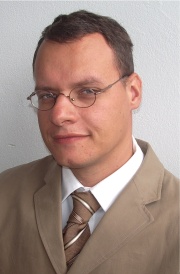
Principle Investigator: Prof. Alexander Grüneis
The main goal of this project is to use atomically precise graphene nanoribbons as templates for ordered adsorption of molecules. The project involves the synthesis of different types of graphene nanoribbons, the adsorption of molecules and the spectroscopic and transport characterization. For spectroscopy we apply a combination of Raman and photoemission. Using a method that we have pioneered in our laboratory, we will transfer the synthesized graphene nanoribbon film onto silicon wafers and incorporate nanoribbons into transistor devices.
Contact Information
Group of Prof. Alexander Grüneis
University of Cologne
Institute of Physics II
grueneis@ph2.uni-koeln.de
References
[1] Y. Falke, B.V. Senkovskiy, N. Ehlen, L. Wysocki, T. Marangoni, R.A. Durr, A.I. Chernov, F.R. Fischer, A.Grüneis, Nano Lett. 20 (7), 4761 (2020).
[2] B.V. Senkovskiy, D.Y. Usachov; A.V. Fedorov, T. Marangoni, D. Haberer, C. Tresca, G. Profeta, V. Caciuc, S. Tsukamoto, N. Atodiresei, N. Ehlen, C. Chen, J. Avila, M.C. Asensio, A. Y. Varykhalov, A. Nefedov, C. Wöll, T.K. Kim, M. Hoesch, F.R. Fischer, A. Grüneis, ACS Nano 12, 7571 (2018).
[3] V. Passi, A. Gahoi, B.V. Senkovskiy, D. Haberer, F.R. Fischer, A. Grüneis, M.C. Lemme, ACS Appl. Mater. Interf. 10, 9900 (2018).
[4] B. V. Senkovskiy, M. Pfeiffer, S. K. Alavi, A. Bliesener, J. Zhu, S. Michel, A. V. Fedorov, R. German, D. Hertel, D. Haberer, L. Petaccia, F. R. Fischer, K. Meerholz, P. H. M. van Loosdrecht, K. Lindfors, A. Grüneis, Nano Lett. 17(7), 4029 (2017).
B3 – From mechanistic investigations on hBN growth to uniform mono- and multilayers on centimeter scale
Principle Investigator: Prof. Sanjay Mathur
This project aims to understand the mechanistic details of the growth of h-BN monolayers via Atomic Layer Deposition (ALD) and Pulsed-injection Chemical Vapor Deposition (PI-CVD) with complementary B and N precursors and single-source Precursors. These techniques allow a precise control over thickness and high aerial uniformity on a centimeter scale. The depositions on metal (Cu), semiconductor (Si) and dielectric (SiO2) surfaces will be investigated as well as the exfoliation and bubble-transfer of h-BN thin films will be tailored for different applications.
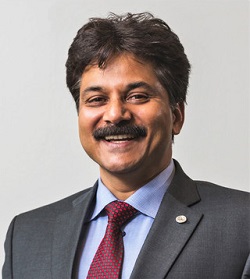
References
[1] V. Brune, C. Hegemann, S. Mathur, Inorg. Chem. 58, 9922 (2019).
[2] M. M. Straub, J. Leduc, M. Frank, A. Raauf, T. Lohrey, S. Minasian, S. Mathur, J. Arnold, Angew. Chem. Int. Ed. 58, 5749 (2019).
[3] A. Sasinska, D. Ritschel, L. Czympiel, S. Mathur, Adv. Energ. Mater. 19, 1600593 (2017).
Contact Information
Group of Prof. Sanjay Mathur
University of Cologne
Department of Chemistry
Sanjay.mathur@uni-koeln.de
Focus Area C – Surfaces & Interfaces
In TIDE, the Focus Area C concerns the detailed study of the templated growth of MBB synthesized in Focus Area A onto the templates prepared in Focus Area B. In addition, we will use highly-oriented pyrolytic graphite (HOPG) as low-cost model for graphene. The structure and order in molecular thin films will be investigated using the synergistic set of experimental tools available from the Principle Investigator‘ laboratories.
C1 – Electronic coupling in template controlled layers of pi-conjugated molecules
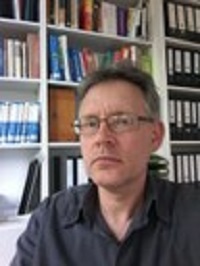
Principle Investigator: Prof. Moritz Sokolowski
Our aim is to study the impact of the structure of molecular aggregates on the delocalized electronic excitations by Fluorescence spectroscopy. Using LEED and STM, we search for interfacial layers that act as templates for the epitaxial growth of molecular layers with a lateral packing of the molecules favorable for superradiance (J-aggregates). Attractive materials that can be used as templates are 2D materials, e.g. blueP on Au(111) or hBN on Cu(111), and different alkali halides. We favor these, because robust and high quality layers (with different bandgaps) can be prepared from single-component precursors. If a fast, undesired energy transfer to the underlying metal substrates limits the flourescence, we will try to grow multilayers or to achieve further separation of the 2D layers by intercalation.
Contact Information
Group of Prof. Moritz Sokolowski
University Bonn
Institute of Physical and Theoretical Chemistry
sokolowski@pc.uni-bonn.de
References
[1] C. Brülke, T. Heepenstrick, I. Krieger, B. Wolff, X. S. Yang, A. Shamsaddinlou, S. Weiss, F. C. Bocquet, F. S. Tautz, S. Soubatch, M. Sokolowski, Phys. Rev. B 99, 122404 (2019).
[2] C. Brülke, T. Heepenstrick, N. Humberg, I. Krieger, M. Sokolowski, S. Weiss, F. S. Tautz, S. Soubatch, J. Phys. Chem. C 121, 23964 (2017).
[3] A. Eisfeld, C. Marquardt, A. Paulheim, M. Sokolowski, Phys. Rev. Lett. 119, 097402 (2017).
C2 – Probing molecular order using plasmonics arrays
Principle Investigator: Prof. Klas Lindfors
We will study the influence of templates such as graphene, hexagonal Boron Nitride, and Graphene Nanoribbons on the order of thin films of pi-conjugated molecules using plasmon-exciton coupling. We will use localized optical fields around optical antennas to probe the order in the templated layers. The possibility to control the field distribution around nanoantennas allows us to study the order of the emitter layer with high spatial resolution. Additionally, large transition dipole moments associated with delocalized excitons in the ordered layer may allow reaching the strong-coupling regime and to explore it in organic optoelectronic devices.

References
[1] M. Lu, M. Pfeiffer, B.V. Senkovskiy, D. Haberer, D. Hertel, K. Meerholz, F.R. Fischer, Y. Ando, A. Grüneis, K. Lindfors, 2D Mat. 7(4), 045009 (2020).
[2] M. Pfeiffer, B.V. Senkovskiy, D. Haberer, F. R. Fischer, F. Yang, K. Meerholz, Y. Ando, A. Grüneis, K. Lindfors, 2D Mat. 5(4), 045006 (2018).
[3] M. Pfeiffer, P. Atkinson, A. Rastelli, O.G. Schmidt, H. Giessen, M. Lippitz, K. Lindfors, Sci. Rep. 8, 3415 (2018).
[4] M. Pfeiffer, K. Lindfors, H. Zhang, B. Fenk, F. Phillipp, P. Atkinson, A. Rastelli, O.G. Schmidt, H. Giessen, M. Lippitz, Nano Lett. 14, 197 (2014).
Contact Information
Group of Prof. Klas Lindfors
University of Cologne
Department of Chemistry
klas.lindfors@uni-koeln.de
C3 – Electronic structure of templated thin films
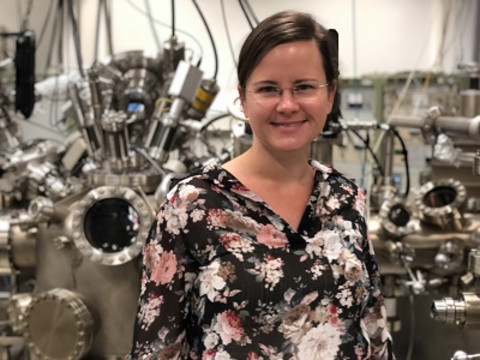
Principle Investigator: Dr. Selina Olthof
This project will investigate the influence of growth modes on the energy level landscape of templated thin organic films using photoelectron spectroscopy. Looking at thermally evaporated molecules on different highly ordered substrate surfaces we intend to develop an understanding how ordering can be achieved via specific substrate–molecule interactions. We are interested to understand how this order influences the width of the density of states and with it the values for ionization energy and electron affinity. These results will be correlated with Density Functional Theory calculations (E1 & E2). Our findings will allow us to design ideal injection and transport layers which can subsequently be applied in organic electronic devices (D2 & D3).
Contact Information
Group of Dr. Selina Olthof
Surface Science Lab
University of Cologne
Department of Chemistry
selina.olthof@uni-koeln.de
References
[1] H. Sahabudeen, H. Qi, M. Ballabio, M. Položij, S. Olthof, R. Shivhare, Y. Jing, S. Park, K. Liu, T. Zhang, J. Ma, B. Rellinghaus, S. Mannsfeld, T. Heine, M. Bonn, E. Cánovas, Z. Zheng, U. Kaiser, R. Dong, X. Feng, Angew. Chemie Int. Ed. 59, 6028 (2020).
[2] F.-J. Kahle, C. Saller, S. Olthof, C. Li, J. Lebert, S. Weiß, E.M. Herzig, S. Hüttner, K. Meerholz, P. Strohriegl, A. Köhler, J. Phys. Chem. C 122, 21792 (2018).
[3] S. Olthof, S. Mehraeen, S.K. Mohapatra, S. Barlow, V. Coropceanu, J.L. Brédas, S.R. Marder, A. Kahn, Phys. Rev. Lett. 109, 176601 (2012).
[4] S. Olthof, R. Meerheim, M. Schober, K. Leo, Phys. Rev. B 79, 245308 (2009).
Focus Area D – Transport & Function
Optoelectronic devices are powerful analytical tools for measuring the macroscopic transport parameters in templated molecular layers. Influencing the order of molecular building blocks will allow us to obtain a further understanding of the underlying transport mechanisms and the optimization of device properties. Therefore, our focus is on investigating the impact of molecular order (amorphous vs. crystalline) on the intrinsic transport properties as well as on the eventual device functionality.
D1 – Ultrafast exciton and charge dynamics in ordered organic semiconductor systems
Principle Investigator: Prof. Paul von Loosdrecht
The main goal of this project is to establish an understanding of the relation between exciton and charge generation and transport, and molecular arrangement. To address this, we use a variety of ultrafast spectroscopic techniques, including transient absorption spectroscopy, time resolved Raman spectroscopy, and 4-wave mixing transient grating experiments.
Understanding of this type or structure/property relation is essential for the further development of pi-conjugated material based functional devices.

References
[1] E. Jung, K. Budzinauskas, S. Oz, F. Unlu, H. Kuhn, J. Wagner, D. Grabowski, B. Klingebiel, M. Cherasse, J.W. Dong, P. Aversa, P. Vivo, T. Kirchartz, T. Miyasaka, P.H.M. van Loosdrecht, L. Perfetti, S. Mathur, ACS Energy Letters 5, 785 (2020).
[2] S. Han, C. Boguschewski, Y. Gao, L. Xiao, J. Zhu, P.H.M. van Loosdrecht, Optics Express 27, 29949 (2019)
[3] J. Zhu, R. German, B.V. Senkovskiy, D. Haberer, F.R. Fischer, A. Grüneis, P.H.M. van Loosdrecht, Nanoscale 10, 17975 (2018).
[4] A. Serbenta, O.V. Kozlov, G. Portale, P.H.M. van Loosdrecht, M.S. Pshenichnikov, Scientific Reports 6, 36236 (2016).
[5] A.A. Bakulin, A. Rao, V.G. Pavelyev, P.H.M. van Loosdrecht, M.S. Pshenichnikov, D. Niedzialek, J. Cornil, D. Beljonne, R.H. Friend, Science 335, 1340 (2012).
See also website of the research group.
Contact Information
Group of Prof. Paul van Loosdrecht
University of Cologne
Institute of Physics II
pvl@ph2.uni-koeln.de
D2 – Lateral and vertical charge-transport study in templated molecular layers

Principle Investigator: Prof. Klaus Meerholz
This project will focus on studying various Molecular Building Blocks suitable for use in Organic Solar Cells, e.g. merocyanines and squaraines. Our goal is to establish structure / morphology / device performance correlations to gain understanding of the charge transport as a function of molecular packing and order. We strive to tune the order by using different templates and molecular building blocks with varying intermolecular interactions.
This project will be a joint collaboration with Dr. Dirk Hertel.
Contact Information
Group of Prof. Klaus Meerholz
University of Cologne
Department of Chemistry
klaus.meerholz@uni-koeln.de
Dirk.hertel@uni-koeln.de
References
[1] T.L. Murrey, D. Hertel, J. Nowak, R. Bruker, T. Limböck, J.-M. Neudörfl, S. Rüth, J. Schelter, S. Olthof, A. Radulescu, A.J. Moulé, K. Meerholz, J. Phys. Chem C (2020).
[2] S. Akin, M. Bauer, R. Uchida, N. Arora, G. Jacopin, Y. Liu, D. Hertel, K. Meerholz, E. Mena-Osteritz, P. Bäuerle, S.M. Zakeeruddin, M. Ibrahim Dar, M. Grätzel, ACS Appl. Energy Mater. 3, 7456 (2020).
[3] A. Ojala, H. Bürckstümmer, J. Hwang, K. Graf, B. von Vacano, K. Meerholz, P. Erk, F. Würthner, Chem. Mat. 22, 4473 (2012).
[4] F. Würthner, R. Wortmann, K. Meerholz, Chem. Phys. Chem 3, 17 (2002).
D3 – Orientation, outcoupling and emission shaping in templated molecular layers
Principle Investigator: Prof. Malte Gather
This project will harness the uniform molecular orientation in films of fluorescent J-aggregates and the spectrally narrow luminescence of the J-aggregate state, e.g. in merocyanine dyes. Our goal is to integrate J-aggregates as emissive layer in Organic Light-emitting Diodes and to harness their molecular orientation (B1) and photophysics, in combination with strong-light matter coupling architectures and/or optical gratings, to obtain efficient light extraction as well as spectrally narrow and highly directed emission.

References
[1] C. Murawski, A. Mischok, J. Booth, J. D. Kumar, E. Archer, L. Tropf, C.-M. Keum, Y.-L. Deng, K. Yoshida, I. D. W. Samuel, M. Schubert, S. R. Pulver, M. C. Gather, Adv. Mat. 42, 1903599 (2019).
[2] A. Graf, M. Held, Y. Zakharko, L. Tropf, M. C. Gather, J. Zaumseil, Nat. Mat. 16, 911 (2017).
[3] T. Schwab, C. Fuchs, R. Scholz, A. Zakhidov, K. Leo, M. C. Gather, Opt. Express 22, 7524 (2014).
[4] P. Liehm, C. Murawski, M. Furno, B. Lüssem, K. Leo, M. C. Gather, App. Phys. Lett. 101, 253304 (2012).
[5] M. Flämmich, M. C. Gather, N. Danz, D. Michaelis, A. H. Bräuer, K. Meerholz, A. Tünnermann, Org. Electr. 11, 1039 (2010).
Contact Information
Group of Prof. Malte Gather
University of Cologne
Department of Chemistry
Malte.gather@uni-koeln.de
Focus Area E – Theory & Modelling
Theoretical approaches play an important role for the molecular design of organic electronic devices. Considering the scope of TIDE, we have distinguished three areas. In Templating process, we start with the clean surface of the template, followed by a subsequent filling of this surface with Molecular Building Blocks. In Bulk properties, we address thin-film properties related to variations in the nano-morphology, taking into account the possible dimerization of pi-conjugated molecules, and the formation of H- or J-aggregates. In Charge carrier and energy transfer dynamics, we want to compute steady-state charge and excitonic transport as a function of the order parameter.
E1 – Development of efficient computational methods for the modeling of molecular adsorbates on graphene and graphene nanoribbons

Principle Investigator: Prof. Stefan Grimme
The aim of the project is the further development of efficient methods and realistic models for the calculation of structures, interaction energies, as well as electronic and optical properties of molecular clusters, aggregates, and periodic systems, in particular of molecules provided by Focus Area A on Graphene and Graphene Nanoribbons. Our preliminary work has shown that the size of the graphene sheet, limited by the required computing time, may lead to artificial edge effects, which can also be also expected for Graphene Nanoribbons. A significant enlargement of the graphene surface, the docking of further HB238 molecules or the calculation of the interaction between several monolayers requires the adaptation of the CREST procedure to the new force field (GFN-FF).
This project is a joint collaboration with Dr. Andreas Hansen.
Contact Information
Group of Prof. Stefan Grimme
University Bonn
Mulliken Center for Theoretical Chemistry
Grimme@thch.uni-bonn.de
Hansen@thch.uni-bonn.de
References
[1] E. Caldeweyher, S. Ehlert, A. Hansen, H. Neugebauer, S. Spicher, C. Bannwarth, S. Grimme, J. Chem. Phys. 150, 154122 (2019).
[2] S. Grimme, J. Chem. Theory Comput. 15, 2847 (2019).
[3] C. Bannwarth, S. Ehlert, S. Grimme, Chem. Theory Comput. 15, 1652 (2019).
[4] J. G. Brandenburg, C. Bannwarth, A. Hansen, S. Grimme, J. Chem. Phys. 148, 064104 (2018).
[5] M. de Wergifosse, S. Grimme, J. Chem. Phys. 149, 024108 (2018).
E2 – Electronic properties of adsorbate arrays of pi-conjugated molecules on hexagonal boron nitride
Principle Investigator: Prof. Thomas Bredow
The project aims at understanding ordering effects on the electronic structure and optical spectra of adsorbed pi-conjugated molecules. The Density of States and absorption spectra will be calculated with advanced solid-state quantum-chemical methods, which will then be compared to experimental spectra obtained in project C1 and C3. The molecules from Focus Area A will be adsorbed on thin hBN layers supported on copper, ITO or SiO2, on blueP, graphite and on Graphene Nanoribbons. Various adsorption modes (e.g. edge-on, face-on orientation) will be considered, in particular sub-monolayers and monolayers with different degrees of order. Adsorbate structures will be optimized at DFT-D3 and semi-empirical level developed in project E1, and the impact of point defects on the spectra will be investigated by appropriate modification of the adsorption models. The nucleation process will be investigated with molecular dynamics and compared to experimental results of project B3. The number of hBN layers will be varied to analyze the decoupling of molecular and (metal) support electronic states, in line with previous theoretical studies on graphene.

References
[1] M. Hochheim, T. Bredow, Phys. Rev. B 97, 235447 (2018).
[2] A. Paulheim, C. Marquardt, M. Sokolowski, M. Hochheim, T. Bredow, H. Aldahhak, E. Rauls, W.G. Schmidt, Phys. Chem. Chem. Phys. 18, 32891 (2016).
[3] M. Hochheim, A. Paulheim, M. Sokolowski, T. Bredow, J. Phys. Chem. C 120, 24240 (2016).
[4] M. Hochheim, T. Bredow, J. Comput. Chem. 36, 1805 (2015).
Contact Information
Group of Prof. Thomas Bredow
University Bonn
Mulliken Center for Theoretical Chemistry
Bredow@thch.uni-bonn.de
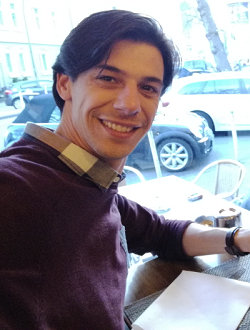
Principle Investigator: Dr. Daniele Fazzi
The aim of this study is the modeling of exciton and charge transport mechanisms and mobility in supramolecular clusters and organic templated interfaces. The ultimate goal is to understand the impact of the templating-induced order on the exciton and charge transport properties of mono- and multi-layer structures.
The project will involve a joint collaboration between the University of Cologne (Dr. Daniele Fazzi) and University of Bonn (Prof. Stefan Grimme).
Contact Information
Group of Dr. Daniele Fazzi
University of Cologne
Department of Chemistry
Dfazzi@uni-koeln.de
References
[1] D. Fazzi, S. Fabiano, T.-P. Ruoko, K. Meerholz, F. Negri, J. Mater. Chem. C 7, 12876 (2019)
[2] A. Luzio, F. Nübling, J. Martin, D. Fazzi, P Selter, E. Gann, C. R. McNeill, M. Brinkmann, M. Ryan Hansen, N. Stingelin, M. Sommer, M. Caironi, Nat. Comm. 10, 3365 (2019).
[3] D. Fazzi, M. Barbatti, W. Thiel, J. Phys. Chem. Lett. 8, 4727 (2017).
[4] D. Fazzi, M. Caironi, Phys. Chem. Chem. Phys. 17, 8573 (2015).
